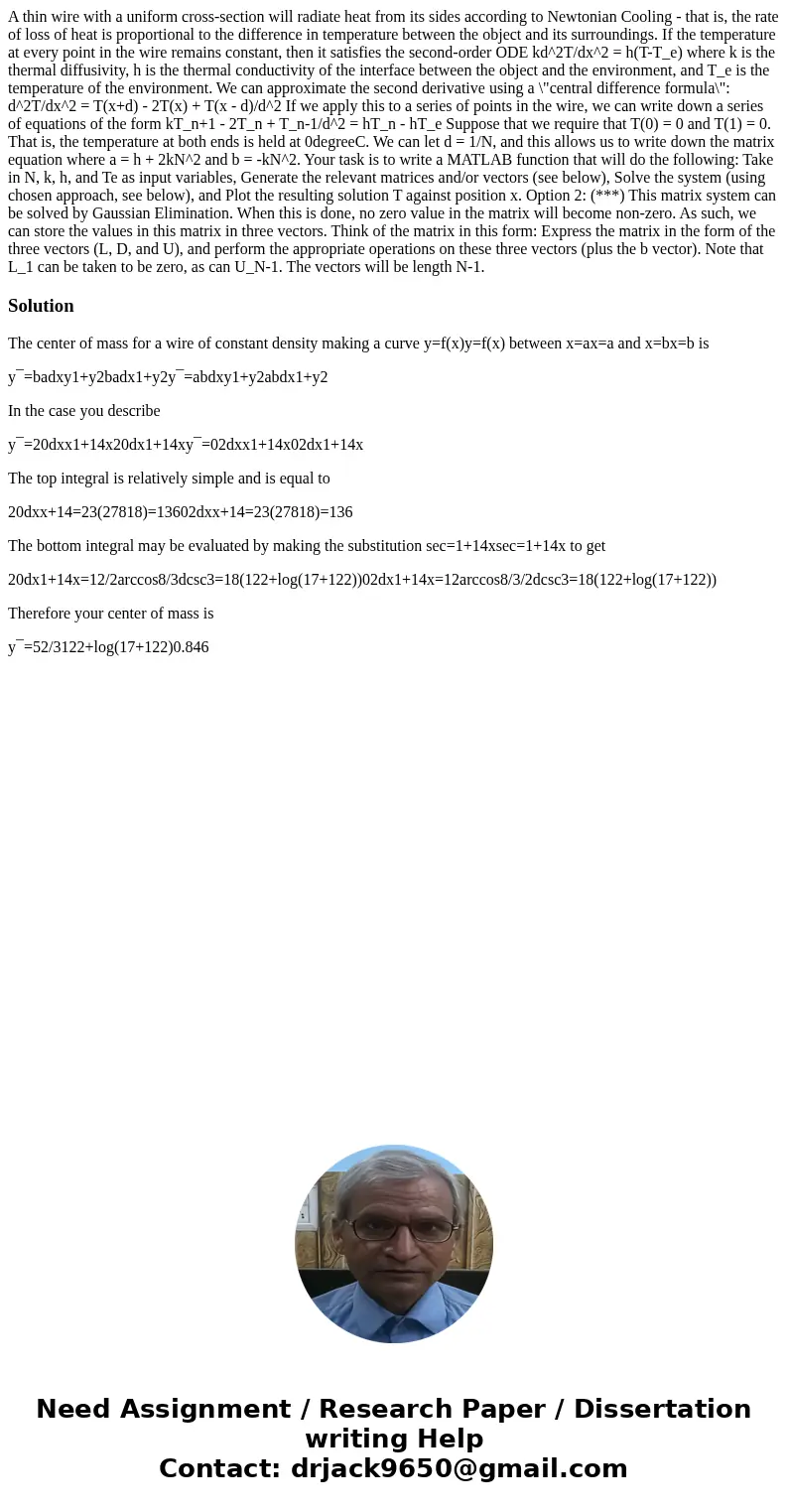A thin wire with a uniform crosssection will radiate heat fr
A thin wire with a uniform cross-section will radiate heat from its sides according to Newtonian Cooling - that is, the rate of loss of heat is proportional to the difference in temperature between the object and its surroundings. If the temperature at every point in the wire remains constant, then it satisfies the second-order ODE kd^2T/dx^2 = h(T-T_e) where k is the thermal diffusivity, h is the thermal conductivity of the interface between the object and the environment, and T_e is the temperature of the environment. We can approximate the second derivative using a \"central difference formula\": d^2T/dx^2 = T(x+d) - 2T(x) + T(x - d)/d^2 If we apply this to a series of points in the wire, we can write down a series of equations of the form kT_n+1 - 2T_n + T_n-1/d^2 = hT_n - hT_e Suppose that we require that T(0) = 0 and T(1) = 0. That is, the temperature at both ends is held at 0degreeC. We can let d = 1/N, and this allows us to write down the matrix equation where a = h + 2kN^2 and b = -kN^2. Your task is to write a MATLAB function that will do the following: Take in N, k, h, and Te as input variables, Generate the relevant matrices and/or vectors (see below), Solve the system (using chosen approach, see below), and Plot the resulting solution T against position x. Option 2: (***) This matrix system can be solved by Gaussian Elimination. When this is done, no zero value in the matrix will become non-zero. As such, we can store the values in this matrix in three vectors. Think of the matrix in this form: Express the matrix in the form of the three vectors (L, D, and U), and perform the appropriate operations on these three vectors (plus the b vector). Note that L_1 can be taken to be zero, as can U_N-1. The vectors will be length N-1.
Solution
The center of mass for a wire of constant density making a curve y=f(x)y=f(x) between x=ax=a and x=bx=b is
y¯=badxy1+y2badx1+y2y¯=abdxy1+y2abdx1+y2
In the case you describe
y¯=20dxx1+14x20dx1+14xy¯=02dxx1+14x02dx1+14x
The top integral is relatively simple and is equal to
20dxx+14=23(27818)=13602dxx+14=23(27818)=136
The bottom integral may be evaluated by making the substitution sec=1+14xsec=1+14x to get
20dx1+14x=12/2arccos8/3dcsc3=18(122+log(17+122))02dx1+14x=12arccos8/3/2dcsc3=18(122+log(17+122))
Therefore your center of mass is
y¯=52/3122+log(17+122)0.846

 Homework Sourse
Homework Sourse